Keys and swords of "Beelzebubs". From the history of the Corps of Mechanical Engineers
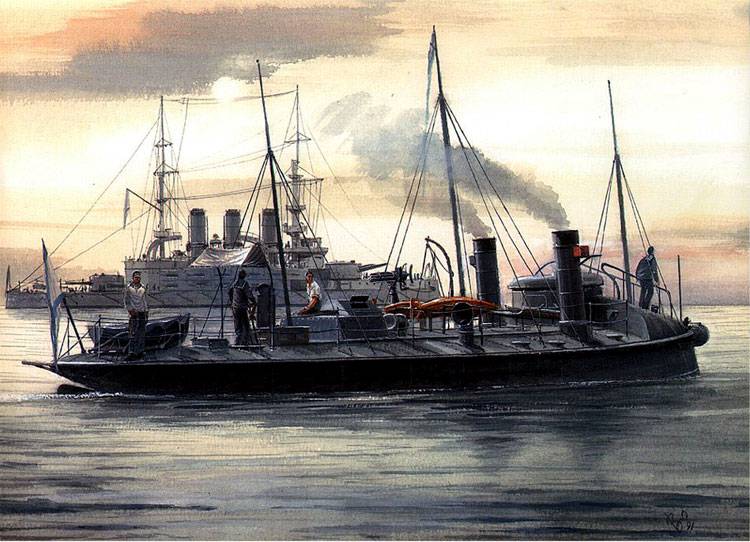
The first reliably confirmed test of the steamboat occurred in July 1783, when the Marquis Claude Geoffroy d'Abban provided the inhabitants of France with his Piroscaf, driven by a steam engine that rotates paddle wheels along the sides of the vessel. The vessel was able to overcome the order of 365 m in 15 minutes, after which the steam engine broke down. The first ship, which proved to be suitable for successful operation, was created by Robert Fulton in 1807 year. He flew Hudson from New York to Albany, at speeds up to 5 nodes. Russia was not far behind the west either. The first ship in our country, called "Elizabeth", was manufactured in St. Petersburg in 1815 at the factory of Charles Byrd (later this company became part of the "Admiralty Shipyards"). In September, a Russian steamer was launched into the pond of the Tauride Palace in the presence of the royal family. "Elizabeth" showed good driving performance. In its wooden case with a length of 18 meters, a single-cylinder steam engine was installed in the 4 l. with., which caused the rotation of the side paddle wheels. The ship went between Petersburg and Kronstadt and could develop the course in 5 nodes. In 1817, the first domestic military ship “Skory” was built at the Izhora plants, the power of the steam engine of which was already 30 hp. A few years later, the military ships “Provorny” and “Izhora” were commissioned with 80 and 100 HP machines. The construction of steamboats, starting from the twenties of the XIX century, was also carried out in Nikolaev, Astrakhan and Arkhangelsk. In addition, our fleet was replenished with steam vessels purchased abroad.
Steam development fleet went fast enough. Naturally, the appearance of steam engines on the ships of the fleet required the training of appropriate specialists for their maintenance. This required primarily people with engineering knowledge, able to control steam engines and organize the service of machine teams, which began to be formed for such ships. The need for engineers in the Russian fleet arose long ago. Therefore, back in 1798, two schools of ship architecture were established, in St. Petersburg and in Nikolaev. Those who graduated from the school had the necessary theoretical training, knowledge in the field of shipbuilding, and certain practical skills in this matter. Later they formed the basis of the order of the Chief of the Main Naval Headquarters (in February 1831), the Marine Engineers Corps. It included ship masters and their assistants, draft artists (draftsmen, designers) and timmermen (carpenters). Their activities took place mainly in shipyards, although some served in port authorities and military ships. However, the new conditions required a different level of training. The fleet needed mechanical engineers, and in 1832, in the Training Maritime Work Crew, formed instead of the St. Petersburg School of Naval Architecture, the training of mechanics for steam ships began. The first graduation (four people) took place in 1833.
By the middle of the XIX century in Russia there were already 49 steam military vessels, their construction continued. Along with mastering the operation of steam engines and boilers on ships, their daily maintenance required the repair of these mechanisms, as well as competent recommendations for their improvement. To accomplish these and other tasks that accompanied the further introduction of steam power plants on ships of the fleet, it was decided to establish the Corps of Engineers of the Fleet, and December 29 1854 of the year was approved by the Maritime Department Mechanics Corps, and the Machinery Crew Regulations , "The body of the corps of mechanical engineers and machine crews" and other organizational documents. They determined the procedure for completing the hull and its organization, while the ship’s engineers, “serving in part in the management of steamer machines”, were renamed “Marine Engineers’ Mechanical Engineers ”.
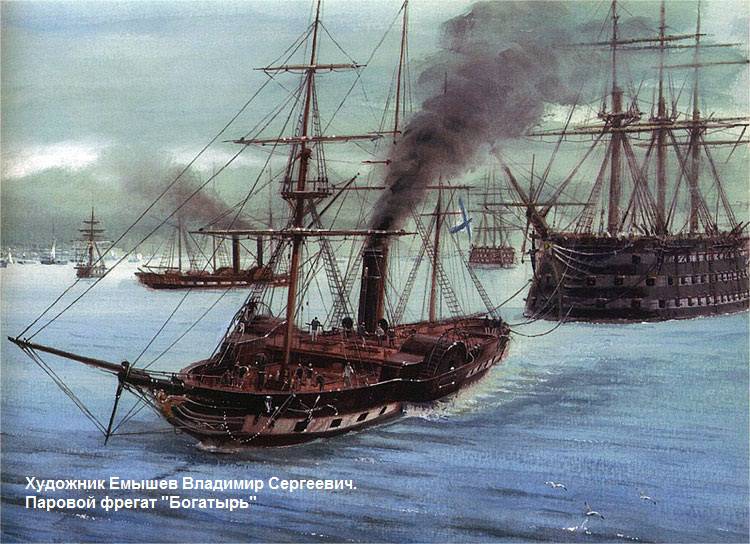
The corps included officers who completed a full course of science in the programs of the conductors' companies of the Training Marine Worker Crew, and conductors issued from the "middle" classes of the said crew. The service in the conductors of the case of mechanical engineers could enroll and volunteer, passed the exam for the relevant program. Graduates of the "upper" class, intended to graduate as mechanical engineers, had to conduct at least two summer campaigns on steam ships, in order to master the rules of machine control.
Mechanical engineers installed ranks from the conductor to the lieutenant general. From the rank to the rank, up to and including the captain, they could be produced according to the "immaculate service" of a five-year term in each rank or after a four-year term, but for special distinctions in service. For shipboard mechanical engineers, division into three categories was introduced depending on the power of the steam engines they service. From the discharge, in turn, depended on the size of the cash content. The senior engineers-mechanics on sea ships, who had 350 hp machines, were ranked as the first category. and more, to the second - senior mechanical engineers on sea steamers who had machines with a capacity of less than 350 hp, and first assistants to senior mechanical engineers of the first discharge, and to the third - senior mechanical engineers on river steamers, second assistants to senior engineers -mechanics of the first category and first assistants to the senior mechanical engineers of the second category. A strict sequence of conversion from discharge to discharge was also established.
The conductors of the corps of mechanical engineers were divided into two classes. For admission to the first class required a higher preparation. The officers and conductors for the period between summer campaigns, if there was no need to leave them on ships, were subject to the direction of the Maritime Administration’s plants or received other appointments "to improve themselves mechanically." The main duty of the senior mechanical engineers on the ships during the period between campaigns was determined by the formula: "Looking after correcting the cars entrusted to him and preparing them for the future campaign."
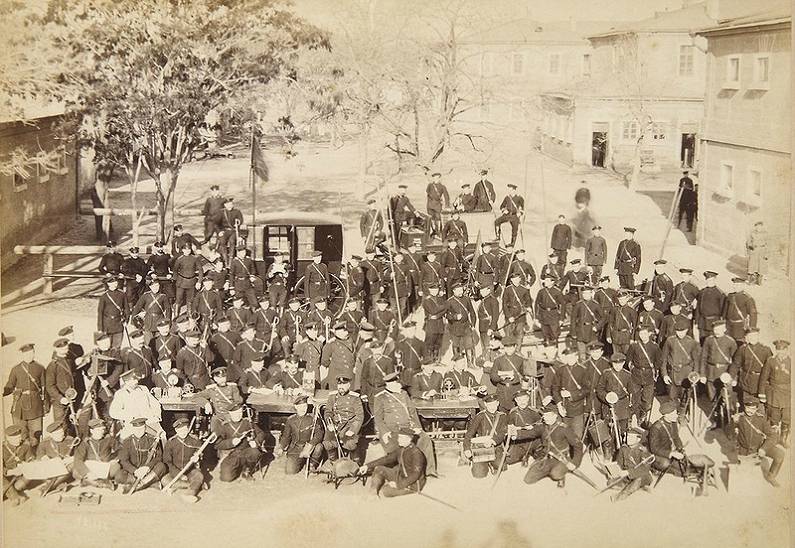
Introduced the rule of regular monitoring of the level of preparedness of specialists. All the chief officers of the corps, up to the rank of lieutenant, inclusive, and the conductors were to annually, in December, undergo a specialty examination in the presence of an inspector and a specially appointed commission. A special report card determined the number of mechanical engineers, conductors, machinists and stokers on various steam vessels. For example, on a ship with a power of machines from 550 to 800 l. with. relied 3 mechanical engineer, 2 conductor, 13 machinists and 28 firemen. With power machines up to 200 HP - 2 mechanical engineer, 2 conductor, 5 machinists and 8 firemen.
The formation of a corps of mechanical engineers and machine crews marked the beginning of the organized development of technical equipment of steam ships, the organization of the service of operating energy resources and the training of relevant specialists. This was of decisive importance in the implementation of the problem of introducing steam-powered installations on ships of the fleet, without which further development of the fleet was impossible. When forming the Corps, its composition consisted of 85 people.
With the development of the steam fleet, issues related to ensuring the fire safety of ships, and with the start of the construction of iron ships and their unsinkability, have become extremely acute. In addition, added the difficult problem of the struggle for the survivability of technical means. All this entailed the need to develop the fundamentals of the struggle for the survivability of ships with steam power plants, and this work fell on the shoulders of, first of all, ship engineers and mechanical engineers.
In the middle of the XIX century in Russia there were already 242 steam vessels (including those under construction). The fleet and the building consisted of: ships - 9, frigates - 13, corvettes - 22, clippers - 12, steamboat frigates - 9, gunboats - 79, yachts - 2, schooners - 25, military transports - XNHX, XNUM yachts, military ships - XNHX, yachts - 8, schooners - 49, military transports - XNXX 11, steam launch boats and boats - 3, floating docks - XNUMX. The possibilities of the country's industry in building ships increased, and the intensity of navigation of ships increased.
Over the next decades, the accumulation of operating experience of ship steam power plants continued. The construction of armored vessels that had begun even more complicated the task of mastering technical equipment. Firstly, the number of ships grew, and secondly, steam boilers and cars became more complex. The need to expand and improve the training of both mechanical engineers and lower ranks became obvious.
However, such a widespread introduction of steam boilers and machines on ships of the fleet, which necessitated the solution of a wide range of issues related to managing the mechanisms and repairing them, training specialists and improving the order of their service, caused very ambiguous views on the place and role of mechanical engineers of high-ranking officials persons of the Navy Department. One of the points of view was clearly expressed in his note from 7 December 1878, Rear Admiral Chikhachev: "The mechanics in our fleet, denounced as officers, are already put in the wrong position, as for controlling the ship's mechanisms are no more than trustworthy with practical information, machinists. " Based on this, he proposed to stop the training of mechanics for the fleet in the engineering school as an unnecessary occupation. However, people who understood the role and importance of mechanical engineers for the creation of a technically equipped, combat-capable navy, argued against such judgments. The proposals presented by them justified the need not only to preserve the engineering school, but also to expand the training base, to improve the training of specialists in every way and to more actively involve highly educated teachers in the training.
The controversy on this topic lasted for several years. Various proposals were discussed, and it can be said that, in general, common sense prevailed. Proposals to replace mechanical engineers with people who have only practical training in the maintenance of steam engines and other technical means were not accepted, however, the assignment of the officer rank to mechanical engineers was stopped. In the new regulation on mechanical engineers, approved in 1886, it was stated that "during the state of the naval service no rank is produced." This caused considerable damage to the prestige of the service of mechanical engineers. It is worth noting that, when the mechanical engineers had just appeared in the fleet, the old officers-sailboats met them extremely unfriendly, perceiving them as the first messengers and one of the reasons for the disappearance of the sailing fleet, which they are used to. Of course, by 1886, the situation had changed and almost straightened out. But the new decision to take the officers' ranks from the mechanics and issue bureaucratic epaulets, again complicated the relationship. It is worth remembering that the mechanical engineers were not of the nobility as combat officers, and this put them even lower than the other naval "black bone" - officers of the Navigators and gunners. Mechanics unfairly nicknamed in the Navy "boots" and "Beelzebubs." Be that as it may, but this attitude towards them from the officers of the fleet persisted until the 1917 year.
However, over time, and most importantly as the technical means, systems, and devices of ships became more complex, which increased the responsibility and role of mechanical engineers on ships, the injustice that had been made regarding them became more and more obvious. But it took almost two decades to correct this situation.
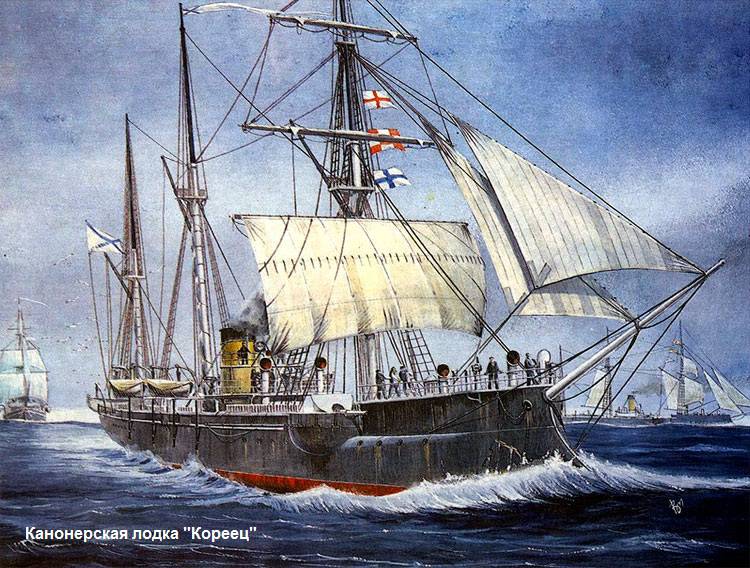
Even wars and battles did not align mechanics with combat officers. For example, they were not awarded the Military Order of St. George. After the heroic battle of 27 on January 1904, the Varyag cruiser and the Koreyan gunboat of all the officers of these ships, according to the highest decree widely reported in newspapers and magazines of that time, were awarded the highest military order of St. George, IV degree. However, in fact, it turned out that all but not all. By the same decree, doctors and mechanics were awarded the Order of St. Vladimir with swords of the third degree. The country's public, agitated by the heroism of the feat of the Russian sailors, expressed disagreement in the press with such a decision. Nicholas II was forced to change the order of award. It can be rightly considered that this event is the first act of recognition of "unclean specialties" by officers of the fleet.
In 1904, it was announced that fleet mechanical engineers were renamed from ranks to military ranks and a change in the position of fleet mechanical engineers. "Then the Head of the Main Naval Staff announced the" Code of Main Engineers of Fleet ", which, in particular, , read: "The following ranks are installed in the corps of engineer-mechanics of the fleet: 1) general: lieutenant-general and major general; 2) headquarters officers: colonel and lieutenant colonel, and 3) chief officers: captain, staff captain, lieutenant and second lieutenant. "As a result, already in 1905, the generals became: V.I. Afanasyev, A.Ya. Lindebek, FA Tyulev, F.Ya. Porechkin, L.Ya. Yakobson, TF Zagulyaev.They were prominent organizers of the activities of various parts of the electromechanical service, people with deep engineering knowledge and extensive experience.
One of the important forms of organization of the activity of mechanical engineers was the regular gathering of flagship mechanical engineers conducted by the technical bodies of the Maritime Department, at which important problems of the Corps’s activities were discussed, work experience was summarized, information on technical innovations in Russia and abroad were brought. Regular work with flagship mechanical engineers was carried out by the Marine Technical Committee that existed at that time. An important organizing role was played by the development of documents regulating the use of ship technical equipment. Regularly revised instructions for the management and care of steam boilers and machines on ships of the fleet. Provisions on the supply of ship mechanisms with "permanent items, stock and consumables" were developed and periodically adjusted. Flagship mechanical engineers and other specialists were involved in the implementation of this work by the Marine Technical Committee. The practice of collecting fees of port and flagship mechanical engineers, for joint discussion of the most important issues related to the mechanical part “gave good results.
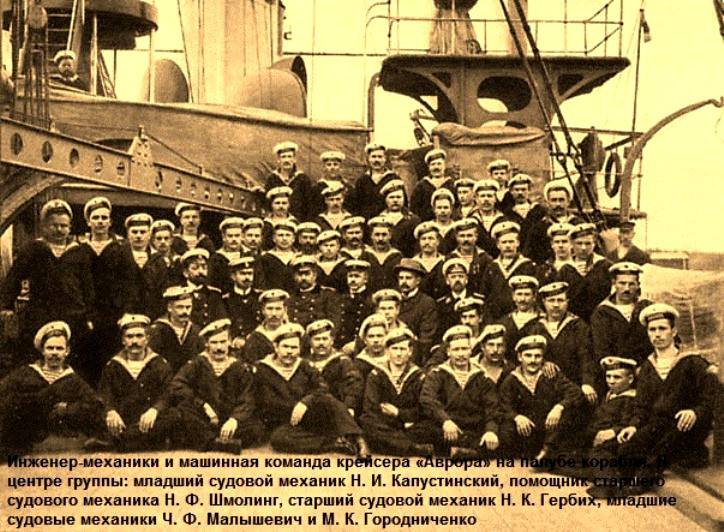
In 1914, the "Rules of Mechanical Service on Fleet Ships" were published. Their development was carried out by a special commission on the basis of accumulated operating experience of steam boilers, machines and other technical means. By order of the Minister of the Sea on 23 May 1914, the “Rules” were announced to the management. These rules and a number of other documents on the operation of shipboard equipment were the result of the experience gained by mechanical engineers, as well as their great work. Their development also testifies to the desire of mechanical engineers to improve the service, ensure order and organization in the maintenance of ships and equipment in good condition. This is one of the good traditions prevailing on the Russian military courts.
The maintenance of technical equipment in good condition created the necessary conditions for the long-distance sailing of ships, which became regular. At the beginning of the XX century in Russia began the construction of submarines. The first domestic combat submarine "Dolphin" was built in 1903 year, and after 10 years before the First World War, there were already several dozen submarines in our country. It’s not an easy task to build them, but no less difficult is their development. These were fundamentally new ships not only in their operational and tactical properties, but also in terms of their technical design. A solid place among the technical equipment on submarines was taken by rechargeable batteries, and internal combustion engines were installed as the main engines for the surface run. The creation of submarines entailed the need to train new specialists, among whom were the mechanical engineers of scuba diving.
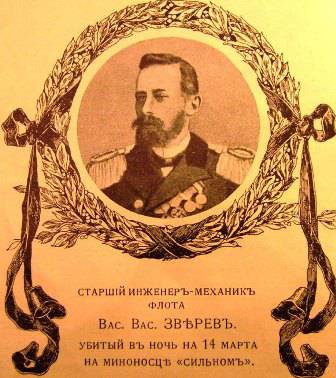
The role and importance of the activities of mechanical engineers continued to grow steadily. The close world of a ship, where the performance of a combat mission depends on the actions of each crew member, and the life of people on the ship is, in fact, incompatible with the division into any castes and varieties. In addition, the mechanics died in a combat situation at least the rest, fighting with the bilge team for the survivability of their ship until the last moment, often not having time to escape. It became increasingly clear in the Navy Department that the framework of the Corps of Mechanical Engineers was very close and unreasonably separated from the naval combat officers. It was decided to abolish this framework. As a result, in 1913, the Corps Corps of Mechanical Engineers was renamed Fleet Mechanical Engineers. So the Corps of Mechanical Engineers as a separate part of the officers of the Russian fleet ceased to exist and moved to a new quality. Mechanical engineers became equal officers of the fleet. They received the rank of naval officers with the addition of "mechanical engineer", which level them with naval officers and in the general benefits and benefits of military personnel.
Sources:
Manvelov N. V. Customs and traditions of the Russian Imperial fleet. M .: Yauza, Eksmo, 2008. C.237-252.
Lubyanov. A. 160 years of formation of the Corps of Mechanical Engineers // Flag of the Motherland. 13 January 2015
Efremov S. Important milestone in stories Fleet // Sea collection. 1991. No.11. C.87-91.
Shugaley I. Reka, from which we emerged long ago ... On the ranks of the personnel of the royal fleet // Battle Watch. 19 September 1992
Volkov S. Russian officer corps. M .: Tsentrpoligraf, 2003. C. 138-144.
Information